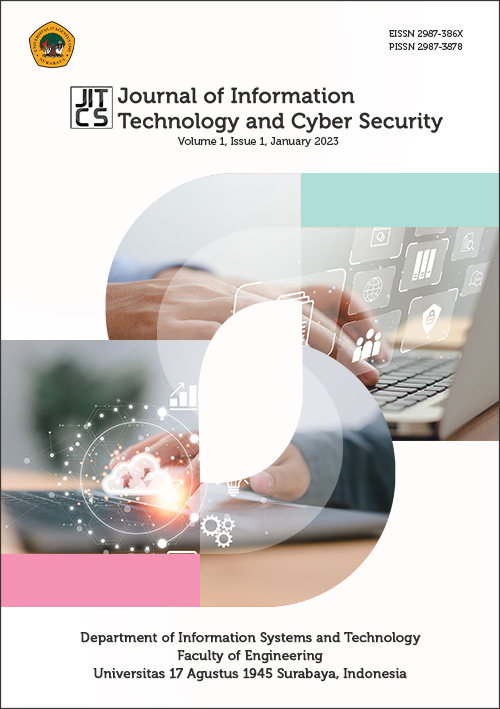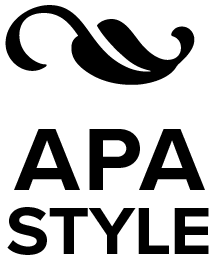Sales Forecasting Analysis Using Trend Moment Method: A Study Case of a Fast Moving Consumer Goods Company in Indonesia
Abstract
The market of Fast-Moving Consumer Goods (FMCG) companies in Indonesia is enormous. Unilever has 400 brands in more than 190 countries, making it a global business that is as influential in the consumer product market as it is in Indonesia. Sales forecasting at this company is very useful for planning expenses and the company's total costs on the business strategy. This study uses trend moment method to forecast the sales and earnings of Unilever Indonesia companies at the end of the year. This article aims to test the performance of the trend moment method calculation on the prediction of net sales and profits in FMCG companies. At the end of the analysis process, it can be concluded that forecasting using trend moment method is going very well. This indicator of success is shown by the error level of MAPE, which is below 10%.
Downloads
References
Alfons, M. E., & Batlajery, S. (2018). Implementation of Sales Forecasting Method in Production Planning in CV. Tirta Alam Jaya Merauke. International Journal of Social Science and Business, 2(1), 28–33. https://doi.org/10.23887/ijssb.v2i1.13693
Batubara, A. S., Dafitri, H., & Faisal, I. (2022). Analysis of Linear Regression and Trend Moment Methods in Predicting Sales using Mape. Jusikom : Jurnal Sistem Informasi Ilmu Komputer, 6(1), 75–81. http://jurnal.unprimdn.ac.id/index.php/JUSIKOM/article/view/2919
Candra, B. P., Kusrini, K., & Al Fatta, Hanif. (2018). Implementation of Trend Moment Method for Stock Prediction as Supporting Production. Journal of Physics: Conference Series, 1140(1), 012031. http://dx.doi.org/10.1088/1742-6596/1140/1/012031
Ensafi, Y., Amin, S. H., Zhang, G., & Shah, B. (2022). Time-series forecasting of seasonal items sales using machine learning – A comparative analysis. International Journal of Information Management Data Insights, 2(1), 100058. https://doi.org/10.1016/j.jjimei.2022.100058
Firmansyah, R., Puspitorini, S., Pariyadi, P., & Syah, T. (2021). Sales and Stock Purchase Prediction System Using Trend Moment Method and FIS Tsukamoto. Arcitech, 1(1), 15–24. https://doi.org/10.29240/arcitech.V1I1.3057
Khairina, D. M., Khairunnisa, R., Hatta, H. R., & Maharani, S. (2021). Comparison of the trend moment and double moving average methods for forecasting the number of dengue hemorrhagic fever patients. Bulletin of Electrical Engineering and Informatics, 10(2), 978–987. https://doi.org/10.11591/eei.v10i2.2711
Lisnawati, H., & Sinaga, A. (2020). Data Mining with Associated Methods to Predict Consumer Purchasing Patterns. International Journal of Modern Education and Computer Science (IJMECS), 12(5), 16–28. https://doi.org/10.5815/ijmecs.2020.05.02
Mutiara, D. A., Susli, A., Suhartono, D., Arifudin, D., & Tahyudin, I. (2021). Data Mining Method to Determine a Fisherman’s Sailing Schedule using Website. Telematika, 14(2), 122–132. https://ejournal.amikompurwokerto.ac.id/index.php/telematika/article/view/1193
Nirmala, V. W., Harjadi, D., & Awaluddin, R. (2021). Sales Forecasting by Using Exponential Smoothing Method and Trend Method to Optimize Product Sales in PT. Zamrud Bumi Indonesia During the Covid-19 Pandemic. International Journal of Engineering, Science and Information Technology (IJESTY), 1(4), 59–64. https://doi.org/10.52088/ijesty.v1i4.169
Nurhayati-Wolff, H. K. (2022). FMCG market in Indonesia - statistics & facts. Statista. https://www.statista.com/topics/7509/fmcg-market-in-indonesia/
Pakpahan, H. S., Anandiya, O., Hairah, U., & Wati, M. (2019). Decision support system for predicting increased data on objects of motor vehicle name transfer (BBNKB I) using trend moment method (Case study: wheels 2 and wheels 4 in Samarinda). Journal of Physics: Conference Series, 1341(4). https://doi.org/10.1088/1742-6596/1341/4/042014
Pangestuti, D. C., & Pasaribu, R. F. (2021). Analysis forecasting sales of tart products. Inovasi : Jurnal Ekonomi, Keuangan Dan Manajemen, 17(4), 792–801.
Pataropura, A., Riki, R., & Saputra, A. (2019). Sales Analysis Using the Forecasting Method. Bit-Tech, 1(3), 144–147. https://doi.org/10.32877/BT.V1I3.79
Pataropura, A., Sabatino, I. D., & Riki, R. (2020). Inventory Management with Forecasting Method: Single Moving Average and Trend Projection. Bit-Tech, 2(3), 110–121. https://doi.org/10.32877/BT.V2I3.162
Putra, P., Vinolia, V., & Novianty, H. (2020). Implementation of Trend Moment Method in Egg Forecasting System in Sukamulia Farm. Proceedings of the Sriwijaya International Conference on Information Technology and Its Applications (SICONIAN 2019), 661–664. https://doi.org/10.2991/aisr.k.200424.100
Ramadhan, G. K., & Utama, D. N. (2019). Fuzzy Tsukamoto based Decision Support Model for Purchase Decision in Pharmacy Company. International Journal of Recent Technology and Engineering (IJRTE), 8(4), 3868–3874. https://doi.org/10.35940/ijrte.d8243.118419
Rusmala, R., & Susilawati, F. (2021). Interface design of prediction in selecting concentration at informatics engineering studies program using trend moment. Journal of Physics: Conference Series, 1833(1), 012032. https://doi.org/10.1088/1742-6596/1833/1/012032
Siregar, W., Syah, A. Z., & Harahap, I. R. (2022). Trend Moment Method to Predict Sales of Pekanbaru Hoya Bread. Sinkron, 7(1), 1–8. https://doi.org/10.33395/sinkron.V7I1.11233
Tahyudin, I. (2014). Sistem Pendukung Keputusan (SPK) Konsep Dasar dan Penerapannya dan Data Mining. Zahira Media Publisher.
Tahyudin, I., Putra, I. M., & Syafa’at, A. Y. (2021). Data Mining Dan Data Warehouse Menggunakan Aplikasi KNIME. Zahira Media Publisher.
Utami, R., Nasution, F. P., Sipahutar, L., Putri, F. A., Putri, D. R. D., & Rahman, M. (2020). Trend Moment Method on Identification of Food Product Sales. 2020 8th International Conference on Cyber and IT Service Management (CITSM). https://doi.org/10.1109/citsm50537.2020.9268909
Widians, J. A., Puspitasari, N., & Sari, A. F. A. (2019). The Prediction Of Tourist Visiting With Average Based Fuzzy Time Series Method. International Journal of Engineering and Advanced Technology (IJEAT), 8(5C), 1467–1469. https://doi.org/10.35940/ijeat.E1215.0585C19
Copyright (c) 2023 The Author(s)

This work is licensed under a Creative Commons Attribution-NonCommercial-ShareAlike 4.0 International License.
Copyright Notice based on COPE (Committee on Publication Ethics) for JITCS: Journal of Information Technology and Cyber Security
-
Ownership and Copyright:
- JITCS: Journal of Information Technology and Cyber Security respects the intellectual property rights of authors. The copyright for individual articles published in JITCS is retained by the respective authors, unless otherwise specified.
- The articles published in JITCS are licensed under a Creative Commons Attribution-NonCommercial-NoDerivatives 4.0 International License (CC BY-NC-ND 4.0), which permits use and distribution in any medium, provided the original work is properly cited, the use is non-commercial, and no modifications or adaptations are made.
- JITCS serves as the initial publisher of the articles, providing them with the first publication platform.
-
Permissions and Usage:
- Distribution for Non-Commercial Purposes: Permitted: Users are allowed to distribute the article for non-commercial purposes, provided the original work is properly cited and no modifications or adaptations are made.
- Distribution for Commercial Purposes: Not Permitted: The article may not be distributed for any commercial purposes without obtaining prior written permission from the author(s).
- Inclusion in a Collective Work (e.g., Anthology) for Non-Commercial Purposes: Permitted: Users are allowed to include the article in a collective work, such as an anthology, as long as the use is non-commercial and the work remains unchanged.
- Inclusion in a Collective Work for Commercial Purposes: Not Permitted: The article may not be included in any collective work or anthology intended for commercial purposes without prior permission from the author(s).
- Creation and Distribution of Revised Versions, Adaptations, or Derivative Works (e.g., Translation) for Non-Commercial Purposes: Not Permitted: Users may not create or distribute revised versions, adaptations, or derivative works, including translations, for non-commercial purposes.
- Creation and Distribution of Revised Versions, Adaptations, or Derivative Works for Commercial Purposes: Not Permitted: Users may not create or distribute revised versions, adaptations, or derivative works, including translations, for commercial purposes.
- Text or Data Mining for Non-Commercial Purposes: Permitted: Users are permitted to engage in text or data mining of the article for non-commercial research purposes, provided the original work is properly attributed.
- Text or Data Mining for Commercial Purposes: Not Permitted: Users may not engage in text or data mining of the article for commercial purposes without obtaining explicit permission from the author(s).
-
Attribution and Citation:
- Proper attribution and citation of the published work should be provided when using or referring to content from JITCS. This includes clearly indicating the authors, the title of the article, the journal name (JITCS), the volume/issue number, the publication year, and the article's DOI (Digital Object Identifier) when available.
- When adapting or modifying the published content, proper attribution to the original source should be given, and the adapted or modified content should be shared under the same CC BY-NC-ND 4.0 license.
-
Plagiarism and Copyright Infringement:
- JITCS considers plagiarism and copyright infringement as serious ethical violations. Authors are responsible for ensuring that their submitted work is original and does not infringe upon the copyright or intellectual property rights of others.
- Any allegations of plagiarism or copyright infringement will be investigated promptly and thoroughly. If proven, appropriate actions, including rejection of the manuscript, retraction of the published article, or other corrective measures, will be taken.
-
Open Access Licensing:
- JITCS supports open access publishing and encourages authors to consider publishing their work under the CC BY-NC-ND 4.0 license to promote the dissemination and use of knowledge in the field of information technology and cyber security.
- The specific terms and conditions of the CC BY-NC-ND 4.0 license will be clearly indicated on the published articles.
-
Policy Review: This Copyright Notice will be periodically reviewed and updated to ensure its continued relevance and compliance with copyright laws, ethical standards, and open access principles in scholarly publishing. Any updates or revisions to the notice will be communicated to the relevant stakeholders.
By adhering to this Copyright Notice, JITCS aims to protect the rights of authors, promote proper attribution and citation practices, and facilitate the responsible and legal use of the published content in accordance with the CC BY-NC-ND 4.0 license.




